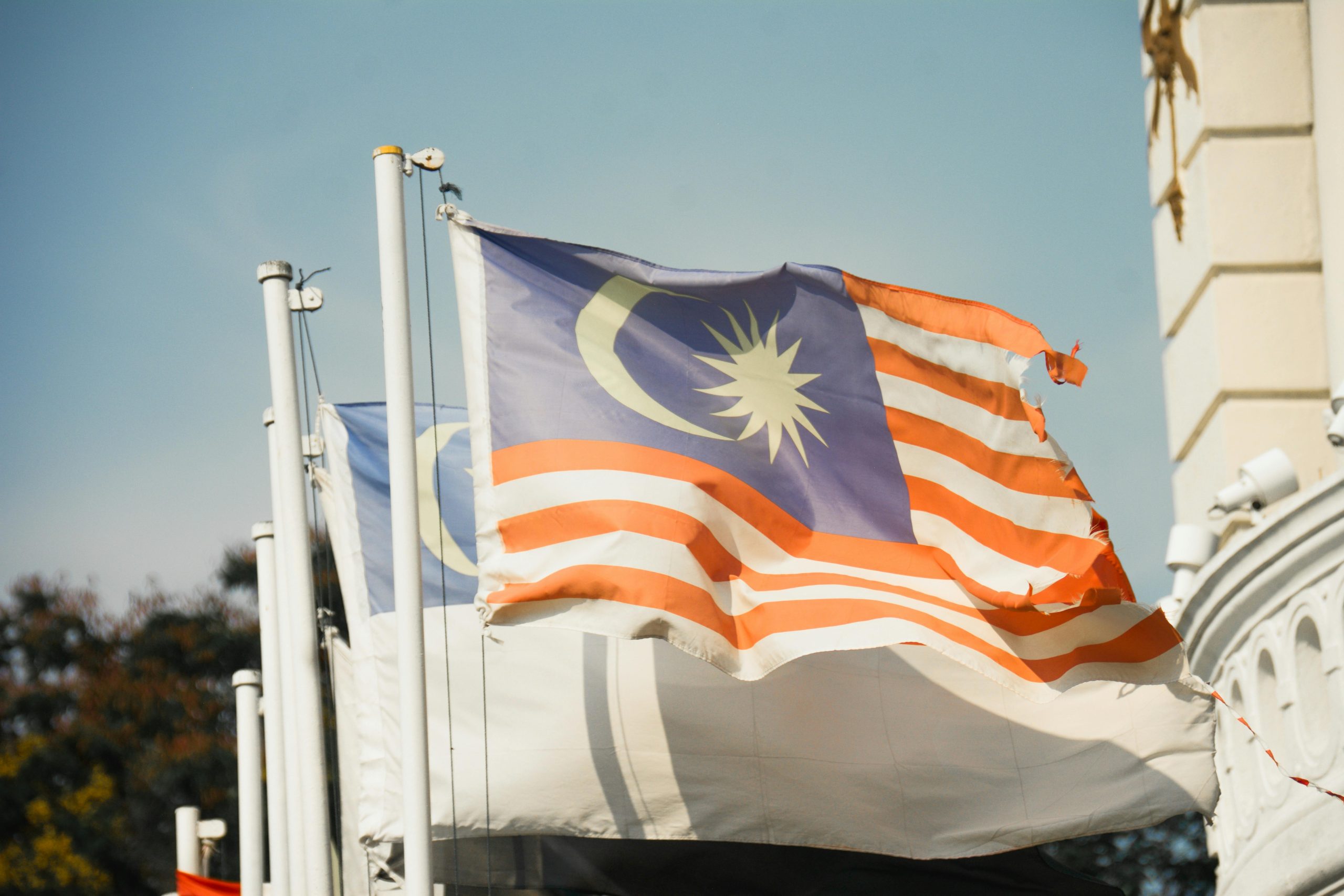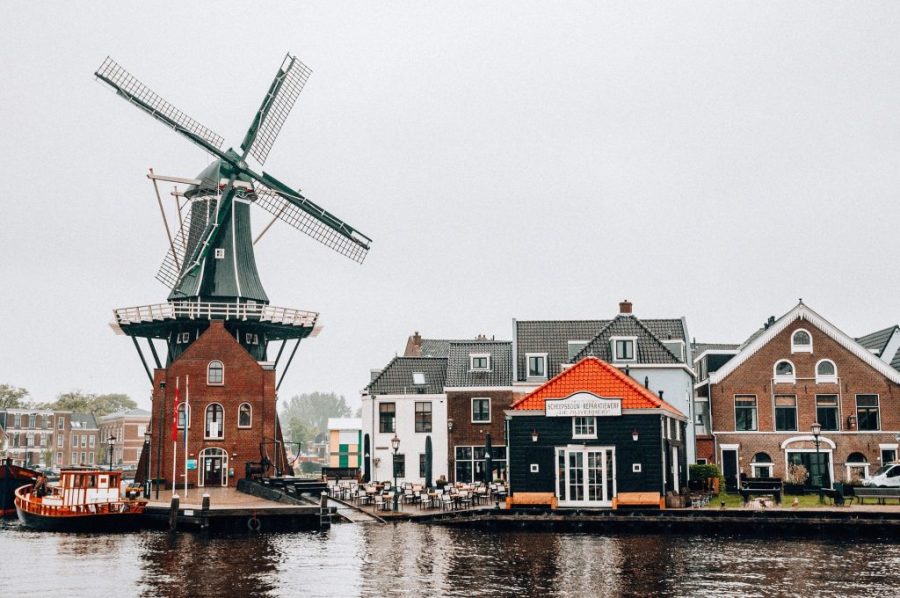Student Visa for the USA: How to Apply
Do you dream of packing your bags to study in the land of opportunity? We tell you all about the student visa in the USA.
You’ve heard a thousand things about the Ivy League. About Harvard, Yale or the country’s research and innovation programs. You’ve probably even imagined yourself on one of those huge campuses in the movies. Studying in the United States is the dream of students from all corners of the world. Its universities are among the most prestigious on the planet and every year more than a million foreigners enroll in them. However, getting there is a bit complicated. One of the reasons is that not everyone has the possibility to obtain a student visa in the USA.
To enter one of its prestigious educational institutions, you’ll need more than just desire. Wondering what steps to take to make it happen? Keep reading, because we’ll walk you through everything you need to know to legally reside in the country while you study — from the specific visas required to the application process, costs, and essential requirements.
When do you need a student visa in the USA?
If you’ve ever considered living in the United States, you’ve likely heard of the Green Card and how challenging it is to obtain. Fortunately, you won’t need one of these coveted cards to study temporarily in the U.S., but you will require a student visa. The specific type of visa needed for your studies will depend on factors such as the course duration, academic level, and nature of the program.
Please note, they are not the same as tourist visas. Although for some short courses they could be useful. Let’s take a look at the visas available for formal academic activities, such as university degrees, specialized programs or long language exchanges.
- Academic or professional courses: If you are enrolled in an undergraduate, graduate, research or certificate program at an accredited institution, you will need an F-1 visa, the most common visa for academic studies.
- Exchanges or mobility programs: Those participating in educational or cultural exchange programs, such as Fulbright or Work and Travel grants, should apply for the J-1 visa, designed specifically for these activities.
- Vocational or technical studies: Practical or technical training programs, such as piloting studies or specific professional training, require an M-1 visa. This visa is ideal for highly specialized non-academic activities.
- Course duration: If your course lasts more than 90 days, you will need a student visa in the USA. For short-term courses (less than three months), such as language programs or workshops, it is possible to use a tourist visa. However, this is not always recommended and it will depend on the policies of the institution whether or not it is accepted.
Types of student visas in USA
As you can deduce, each particular situation requires a different type of visa. Are you aiming to pursue a college degree? Participate in an exchange program? Maybe you’re thinking about technical training? Let’s take a look at the different types of visas you might need to move to the United States to study.
F-1 Visa
The F-1 visa is the most common visa for international students. It is intended for those who wish to pursue full academic programs at accredited university-level institutions, colleges, private high schools, religious seminaries, or even intensive language programs. Ideal for studies ranging from bachelor’s and master’s degrees to doctoral degrees.
It allows students to remain in the U.S. while completing their program of study, with the possibility of opting for additional activities such as part-time work on campus or practical training programs related to their field of study.
M-1 Visa
The M-1 visa is intended for students seeking training in non-academic technical or vocational programs. This includes practical training courses in areas such as mechanics, aircraft piloting, graphic design or beauty. Unlike the F-1 visa, it does not allow work outside of the training program.
This visa is suitable for those who need to develop specific skills in a structured educational environment. Permits usually last for the duration of the course in question.
J-1 Visa
It is intended for students and participants in cultural and academic exchange programs. This includes activities such as university student exchanges, research programs, vocational training and internships. It is also common for scholars participating in initiatives sponsored by educational institutions or government agencies, such as Fulbright scholarships.
J-1 visa holders are usually subject to specific regulations, such as the obligation to return to their home country after completing the program (according to the sponsor’s terms). However, it is possible to work if the position is exchange-related.
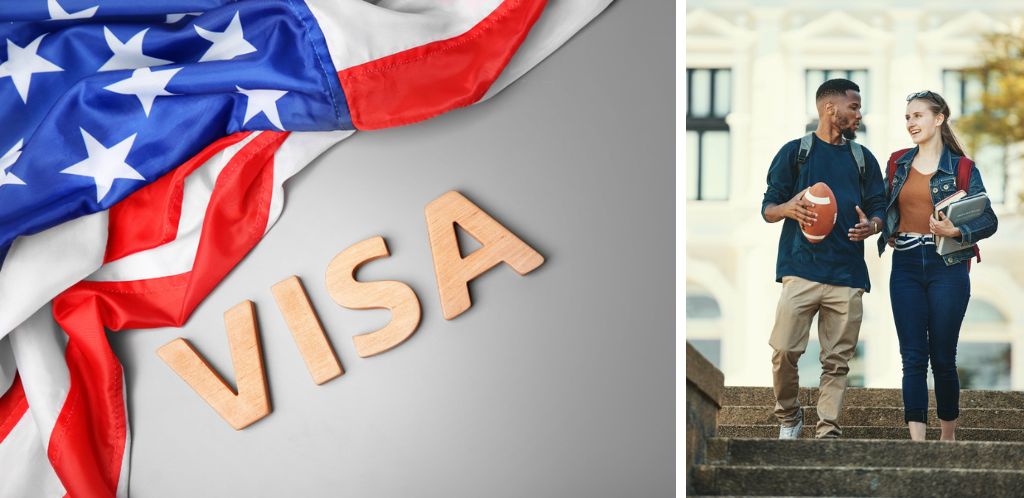
Benefits of visas to study in the U.S.
Getting a student visa in USA is already considered lucky. But they come with extra benefits that will further enrich your academic and personal experience in the country. Depending on the type of visa, you will be able to work and even move in with your family members. Let’s take a look at the highlights of each visa:
F-1 Visa: What is it for?
As we said, the F-1 visa is ideal for students seeking to study academic programs in the United States. In addition to giving you the opportunity to study at some of the most prestigious institutions in the world, it also comes with other advantages:
- Extended stay: You will be able to stay in the country for the duration of your course and enjoy an additional 60 days to organize your return or plan your next steps.
- Limited work during your studies: Do you need to work to cover your expenses? This visa allows you to work on campus up to 20 hours per week during term time and full-time during vacations.
- Optional practical training programs (OPT): After graduation, you can work for up to 12 months in your field of study. In STEM careers (science, technology, engineering and mathematics-related degrees), this period can be extended up to 36 months.
- Travel in and out of the U.S.: As long as your visa is active, you may leave and return to the country as many times as you need.
- Option to bring companions: Your spouse and children may apply for the F-2 visa to accompany you.
M-1 visa: what does it allow you to do in the United States?
In the details of the M-1 visa you will find quite a few differences with the F-1, but it also offers significant advantages:
- Allowing specialized studies in technical fields: From aircraft piloting to graphic design, you will be able to acquire practical skills in structured programs of short or long duration.
- Stay adjusted to the course: You will be able to stay in the U.S. during your program and enjoy an additional 30 days to organize your departure.
- Travel in and out of the U.S.: As long as you comply with the conditions of your visa, you will be able to leave the country and return without any problems.
- Limited work options: Although this visa does not allow you to work, you can do internships related to your training under certain conditions.
- Accompanying persons welcome: Your immediate family (spouse and minor children) may apply for an M-2 visa to accompany you.
J-1 Visa: what benefits does it include?
Now, let’s explore the advantages of obtaining a visa specifically designed for students and participants in academic or cultural exchange programs:
- Wide range of activities: Includes academic exchanges, vocational training, research, and scholarships sponsored by public or private institutions.
- Extended stay under the program: You will be able to stay in the U.S. during your exchange, with an additional period to return to your home country.
- Exchange-related work: In some cases, this visa allows for specific work related to the objective of the program, such as teaching assistance or research.
- Cultural exchange: Allows you to participate in activities that promote cross-cultural understanding, broadening your experience beyond the academic field.
- Opportunity to travel with family: Your immediate family members (spouse and minor children) may accompany you on a J-2 visa. They may study and work under certain conditions.
Important: If you are a frequent traveler and want to stay connected without worrying about expensive roaming or looking for a new SIM at every destination, Holafly’s subscription plans are for you. With a single eSIM, enjoy internet in more than 170 countries for a fixed price and no surprises on your bill. travel without limits and connect easily and securely! 🚀🌍
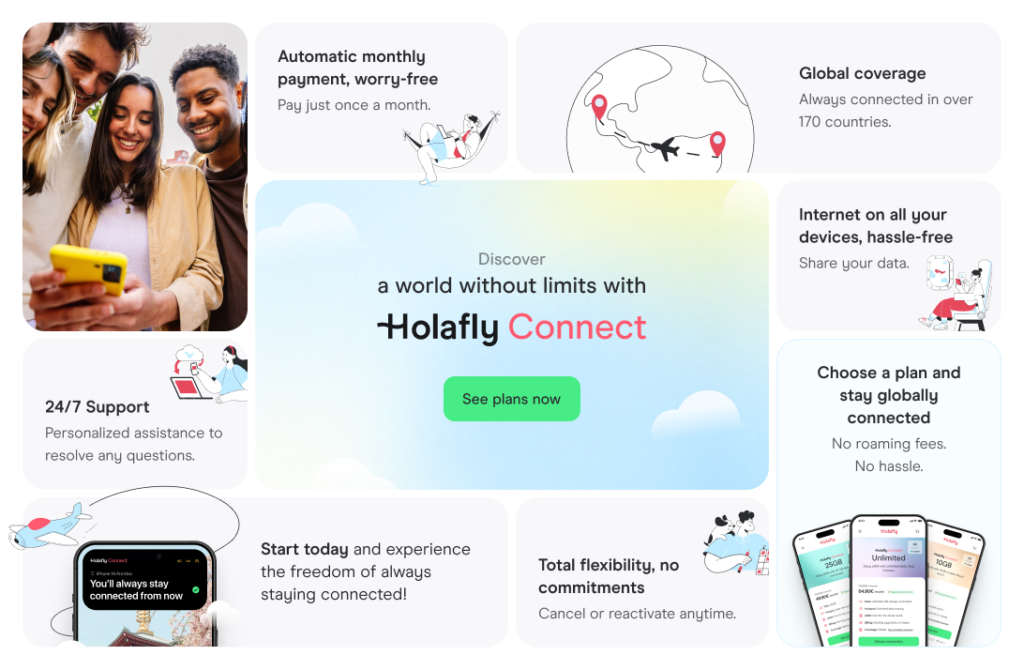
Requirements you must meet for each type of student visa in the USA
Are you already more or less clear about which USA student visa you need? Before you get down to business and start the process, you should know that not everyone can get one. There are certain requirements that you must meet to be eligible. These criteria ensure that the applicant meets the necessary conditions to access the corresponding educational program. Let’s see what you will have to prove for each of the visas.
Requirements to be eligible for the F-1 visa
The F-1 visa is intended for international students who plan to pursue academic studies in the U.S. To be eligible, you will need:
- Admission to an accredited institution: You must be accepted into an academic program. It doesn’t matter if it is an undergraduate, graduate, research or intensive language course. The institution must be approved by the Student and Exchange Visitor Program (SEVP).
- English proficiency: It is not mandatory for all programs, but most institutions require a minimum level of English. You will have to prove it with TOEFL or IELTS exams.
- Proof of financial solvency: You’ll need to show that you can afford your tuition, housing, and living expenses throughout the program.
- Exclusive purpose of study: You must prove that your primary intention is to study and not to seek employment or permanent residency in the U.S.
- Link to your home country: It is important to demonstrate that you have strong ties to your home country, such as family, property or employment. This is required to ensure that you will return after completing your studies.
Requirements to be eligible for the M-1 visa
Let’s now look at what you will need to demonstrate in order to obtain the visa for students interested in technical or vocational programs. Specific requirements include:
- Enrollment in an accredited technical or vocational program: You must have been accepted into a non-academic course, such as mechanical training, graphic design, or piloting.
- Financial solvency: It is necessary to prove that you have the financial resources to cover the cost of the course and your living expenses during the program. Off-campus work is not allowed on this visa.
- Link to your home country: As with the F-1 visa, it is necessary to demonstrate that you plan to return to your home country upon completion of your studies.
- Previous academic documentation: Some technical institutions may require transcripts of previous studies related to your field of study.
J-1 visa eligibility requirements
Considering applying for a J-1 visa? Be prepared to justify:
- Participation in an approved exchange program: This type of visa is designed for exchanges sponsored by educational, government or private institutions, such as Fulbright scholarships.
- Financial solvency: You will need to demonstrate that you can cover your personal and program expenses during your stay.
- Commitment to cultural exchange: This type of visa requires you to participate in cultural or educational activities that promote mutual understanding between your home country and the U.S.
- Return to home country: In some cases, holders of this visa must return to their home country for at least two years at the conclusion of the program before they can apply for other types of visas.
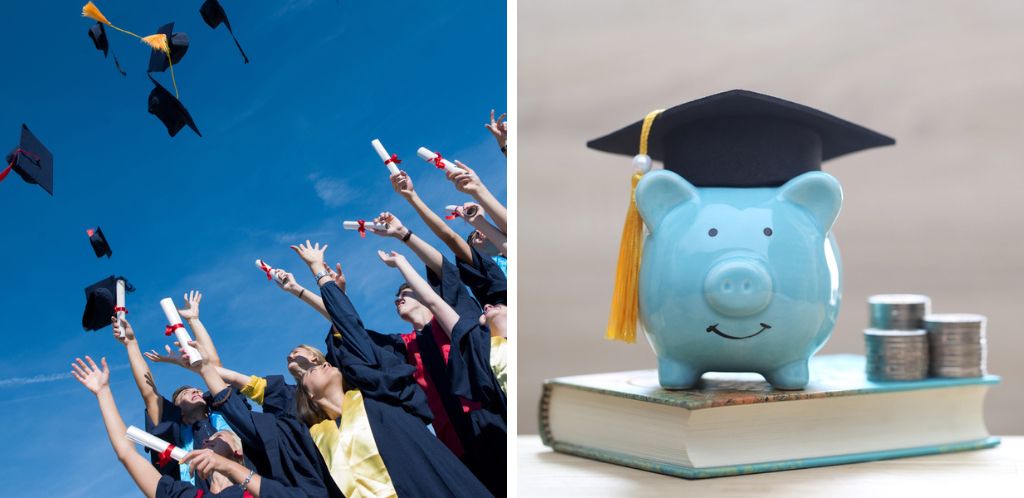
How to apply for student visas in the USA?
Okay, now that we are clear about the different types of visas for students in the USA and the requirements needed to obtain one, let’s move on to practical matters.
Each type of visa has specific requirements, but they share common elements, such as the preparation of documents and an interview at the U.S. embassy or consulate. The application process may seem a bit complex, so to simplify it, let’s break it down step by step. This way we’ll understand it better.
Documents you need to present to obtain the F-1 visa
For the F-1 visa, intended for academic studies, you will need the following documents:
- I-20 form: Issued by the educational institution in which you are enrolled. This document is essential for your application.
- DS-160 form: This is the nonimmigrant visa application form, which is completed online. You must save it and present the confirmation voucher with the barcode.
- Valid passport: It must be valid for at least six months from your entry into the U.S.
- Proof of payment of the SEVIS fee: This fee (it is $200, but more on that later) secures your registration in the Student and Exchange Visitor Information System.
- Recent photograph: Must meet U.S. visa requirements, such as size and white background.
- Proof of financial solvency: Bank statements, letters from sponsors or scholarship documentation showing that you can cover your expenses.
Documents you must submit to obtain the M-1 visa
For the M-1 visa, designed for technical or vocational studies, the required documents include:
- I-20 form: Also issued by the institution where you will pursue your technical or vocational training.
- DS-160 form: As with the F-1 visa, this form is completed online and proof of completion is required.
- Valid passport: Valid for at least six months from the expected date of entry.
- Proof of payment of the SEVIS fee: The fee is $200 and must be paid prior to your interview.
- Recent photograph: Make sure it meets official standards.
- Proof of funds: Documents showing that you can cover the full duration of your program and living expenses.
Documents you must submit to obtain a J-1 visa
If you are applying for a J-1 visa for an exchange program, you will need:
- DS-2019 form: This form is provided by the exchange sponsor and certifies the details of the program.
- DS-160 form: As with the other visas, this form is required for the application.
- Valid passport: Valid for at least six months from your expected arrival.
- Proof of financial funds: Including bank statements, letters of sponsorship or funding from the sponsoring organization.
- Proof of payment of the SEVIS fee: The fee for this visa is $220.
- Letter from the sponsor: An additional document explaining the purpose of the program and your role in it.
U.S. student visa interviews and questions
No matter what type of visa you are applying for, you will need to attend an interview at the U.S. embassy or consulate in your home country. Sounds a little intimidating? It’s easier than it sounds. Let’s take a look at what these interviews consist of.
- Length of the interview: They are usually brief, 3 to 10 minutes, but decisive.
- Frequently asked questions:
- Why do you choose to study in the United States?
- What will you study and at what institution?
- How will you finance your studies?
- Do you plan to return to your home country after completing your studies?
- Documents you should bring: In addition to the documents required for your visa, bring any additional proof to support your answers, such as letters of acceptance, travel itineraries, and proof of rootedness in your country.
- Preparation: Answer clearly and honestly. Make sure your answers match the information on your application.
Where to apply for visas?
The process to obtain a student visa for the United States begins with submitting your application through official channels. This process combines online and in-person steps, depending on your location and the regulations of the U.S. embassy or consulate in your country.
1. Online application: the DS-160 form
The first step for all nonimmigrant visas, including F-1, M-1 and J-1 visas, is to complete DS-160 Form. You can find it on the official website of the U.S. Department of State. Be sure to have your passport, study program information and I-20 Form or DS-2019 ready before you begin.
- How to complete it: Answer all questions accurately and honestly. Upon completion, you will receive a voucher with a barcode that you must present during your interview.
- Payment of the application fee: Before scheduling the interview, pay the visa fee on the platform designated by the local embassy or consulate.
2. U.S. embassies and consulates
Once you have completed the DS-160 form, you will need to schedule an appointment at the nearest U.S. embassy or consulate. This step includes two appointments: one for biometrics (photograph and fingerprints) and one for the interview.
- Location: Check the website of the U.S. embassy or consulate in your country to confirm hours and availability.
- Documentation: Bring your DS-160 form, proof of payment, passport and any additional documents required.
3. Applicant service centers (ASCs)
In some countries, such as Mexico or India, biometric data is collected at Applicant Service Centers (ASC). You will need to complete this step before attending the interview at the embassy.
If you need assistance during the process, you can contact your local embassy, consulate or customer services. Some consulates offer phone or email support for specific questions, so remember to sign up for your Holafly eSIM to get help wherever you are!
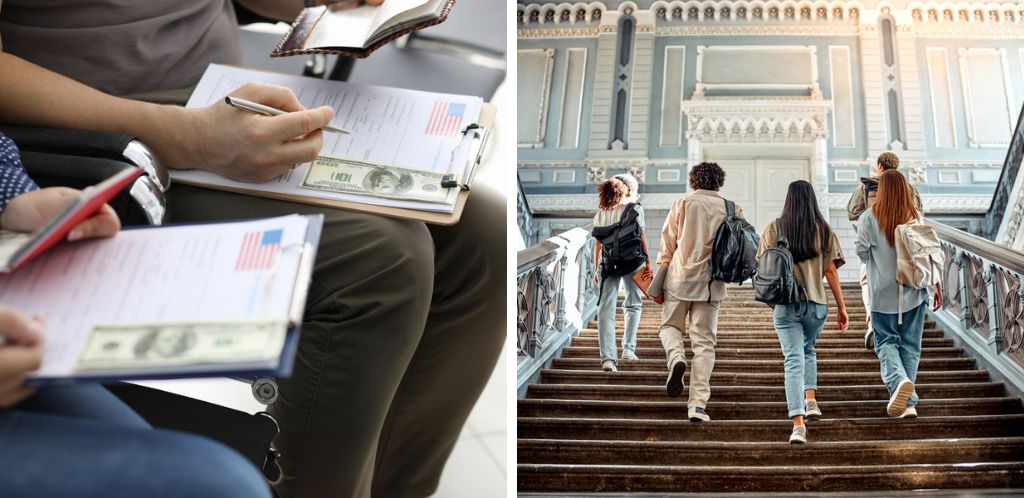
How much does a student visa in the USA cost?
Now that you know the process, you may be wondering how much it will cost you. It’s not free, but it is not as expensive as you might imagine. It is, however, one of the countries that charge the most for granting this permission. Australia ($1,050!) and the United Kingdom ($460) exceed it. These costs include administrative fees, registration fees in the SEVIS system and other expenses related to medical insurance and documentation.
Main costs
- Visa application fee (MRV): Is mandatory for all non-immigrant visas and amounts to $185. It must be paid before scheduling your appointment at the embassy or consulate. This fee is non-refundable and non-transferable.
- SEVIS Fee: Is the Student and Exchange Visitor Information System. The costs are:
- F-1 and M-1 visas: $200
- J-1 Visa: $220
- Additional costs: Depending on the country, there may be additional fees for consular or expedited processing services.
Other related expenses
- International medical insurance: Although it is not a mandatory requirement for all visas, many educational institutions will require you to have international medical insurance for foreigners in the U.S. The average cost ranges from $500 to $1,000 per year, depending on the coverage you choose.
- Documentation and translations: Documents such as academic certificates or criminal records may require official translation. This can cost between $50 and $150 per document.
- Travel and accommodation expenses for the interview: Do you live far from the consulate or embassy? You will need to add transportation costs and, if far away, one night’s accommodation.
How long does it take to obtain a student visa in the USA?
It varies depending on factors such as the time of year, the workload of the embassy or consulate and how quickly you complete the paperwork. Let’s take a look at the approximate times that usually occur at the different stages:
Pre-application process
- Receipt of the I-20 or DS-2019 form: Before applying for your visa, the educational institution must send you this document. It may take 2 to 4 weeks after your acceptance.
- Completion of the DS-160 form: This form is completed online. It takes 1 to 2 hours to complete, but be sure to save time to gather the necessary documents.
Times at the consulate or embassy
- Appointment scheduling: In times of high demand, such as the summer, appointments may be available with a 2 to 4 week wait. At other times, you may be able to get an appointment in less than a week.
- Interview and resolution: After the interview, the consular officer will notify you if your visa is approved. If there are no problems, visa issuance may take 5-10 business days.
Estimated total time
From receipt of the I-20 or DS-2019 form to visa approval, the entire process can take between 6 to 8 weeks on average. However, exceptional cases (such as additional document requests) could extend this period.
Lawyers for advice on how to apply for a student visa in USA
Does this sound complicated to you? Although it is simpler than it sounds, it is normal for many students to seek expert help to apply for a student visa in the USA. As you can imagine, there are many companies around the world that offer this service. To help you find one, we have compiled some of the most popular ones:
J&D Immigration
J&D Immigration Advisers is a firm with extensive experience in handling visas for the United States. In particular student visas such as F-1, J-1 and M-1. Its comprehensive approach ensures that each client receives personalized guidance throughout the entire process, from document preparation to the consular interview.
- Location: Alcalá 25 street, Madrid, Spain
- Services: Complete counseling for student visas, interview guidance and detailed review of forms. They also offer document translation services if necessary.
- Languages: Spanish and English
- Hours: Monday to Friday, 9:00 am to 6:00 pm.
- Fees: From 150 euros (about $160) for initial consultation, with customized packages for complete processes.
Tadeo & Silva Immigration Attorneys
Based in Atlanta, Tadeo & Silva Immigration Attorneys is a law firm specializing in immigration. Their team is trained to handle complex applications and provides legal representation throughout the entire process, from SEVIS registration to the embassy interview.
- Location: 260 Peachtree St NW, Atlanta, Georgia, USA.
- Services: F-1 and J-1 visa counseling, support with legal problems and appeals if necessary. They also offer virtual consultations.
- Languages: Spanish and English
- Hours: Monday through Friday, 8:30 am to 5:00 pm.
- Fees: Initial consultation starting at $200, with personalized fees depending on the complexity of the case.
Rozas & Associates Law Firm
This Louisiana law firm specializes in immigration and offers comprehensive services for international students. Their accessible and personalized approach ensures that applicants understand every step of the process.
- Location: 750 North Boulevard, Baton Rouge, Louisiana, USA.
- Services: F-1, J-1 and other visa applications. Also handles services related to permanent residency and work permits.
- Languages: Spanish and English
- Hours: Monday through Friday, 9:00 am to 5:00 pm.
- Fees: Initial consultation from $250, with plans adjusted according to services required.
Stay Legal Abogados Spain
Stay Legal Abogados Spain is ideal for Spanish students seeking to obtain student visas in the USA. Their team of lawyers handles each case with a detailed approach, adapting to the client’s needs and ensuring compliance with legal requirements.
- Location: 60 Gran Vía Street, Madrid, Spain.
- Services: Advice on F-1, M-1 and J-1 visas, including document review and preparation for consular interviews.
- Languages: Spanish
- Hours: Monday to Friday, from 10:00 am to 7:00 pm.
- Fees: Initial consultations starting at 120 euros (approximately $130). Complete processes from 700 euros (about 750 dollars).
Frequently asked questions about student visas in USA
Experts recommend starting the application process at least 3 to 4 months before your academic program begins. This gives you enough time to complete forms, gather documents, pay fees and schedule the consular interview. Also, in times of high demand, such as the summer, consulate appointments may take longer than usual.
Yes, F-1 and M-1 visas can be renewed if you need more time to complete your program of study or wish to continue at a higher academic level (such as moving from a bachelor’s to a master’s degree). You must apply for renewal before your current visa expires and meet the current requirements.
With an F-1 visa, you can work on campus up to 20 hours per week during term time and full-time during vacations. You can also opt for Optional Practical Training (OPT) or Curricular Practical Training (CPT) related to your field of study. The M-1 visa, on the other hand, only allows specific internships at the end of the program.
The student visa does not allow you to apply directly for permanent residency (Green Card). However, you can explore other options once you complete your studies, such as switching to an H-1B (work) visa or participating in employment-based or family-based immigration programs.
If they reject your visa, it is usually because of problems with documentation, lack of proven financial solvency, or doubts about your intentions to return to your home country. In this case, you can correct the errors identified and reapply. Be sure to bring all the necessary documentation and prepare clear answers for the interview.
Yes, you may travel outside the U.S. during vacation periods or for specific reasons, as long as your visa is valid and you have an I-20 (F-1/M-1) or DS-2019 (J-1) form signed by your institution with you. It is important to notify your school or sponsor before you leave.
If you change institutions or programs, you must notify U.S. Citizenship and Immigration Services (USCIS) and obtain a new Form I-20 or DS-2019. You must comply with this to maintain your legal status.





 Language
Language 


















 No results found
No results found

